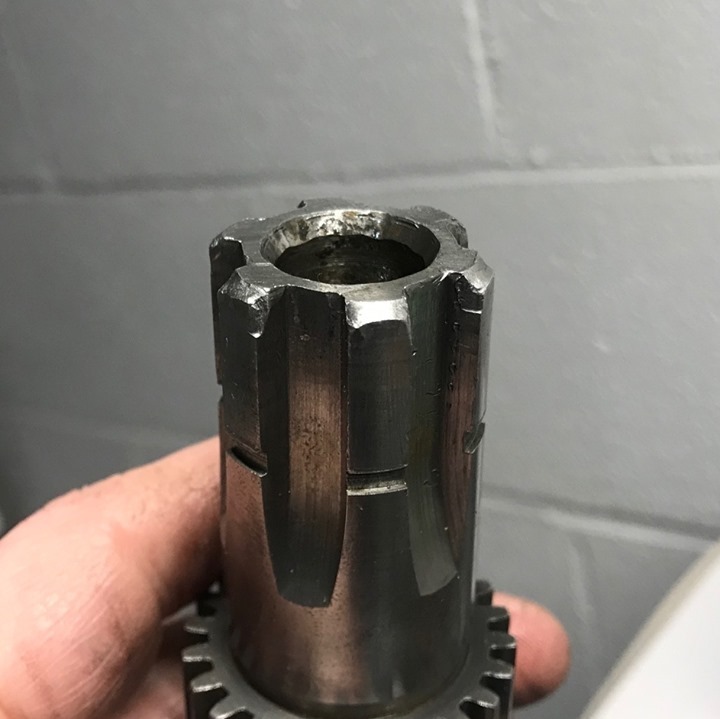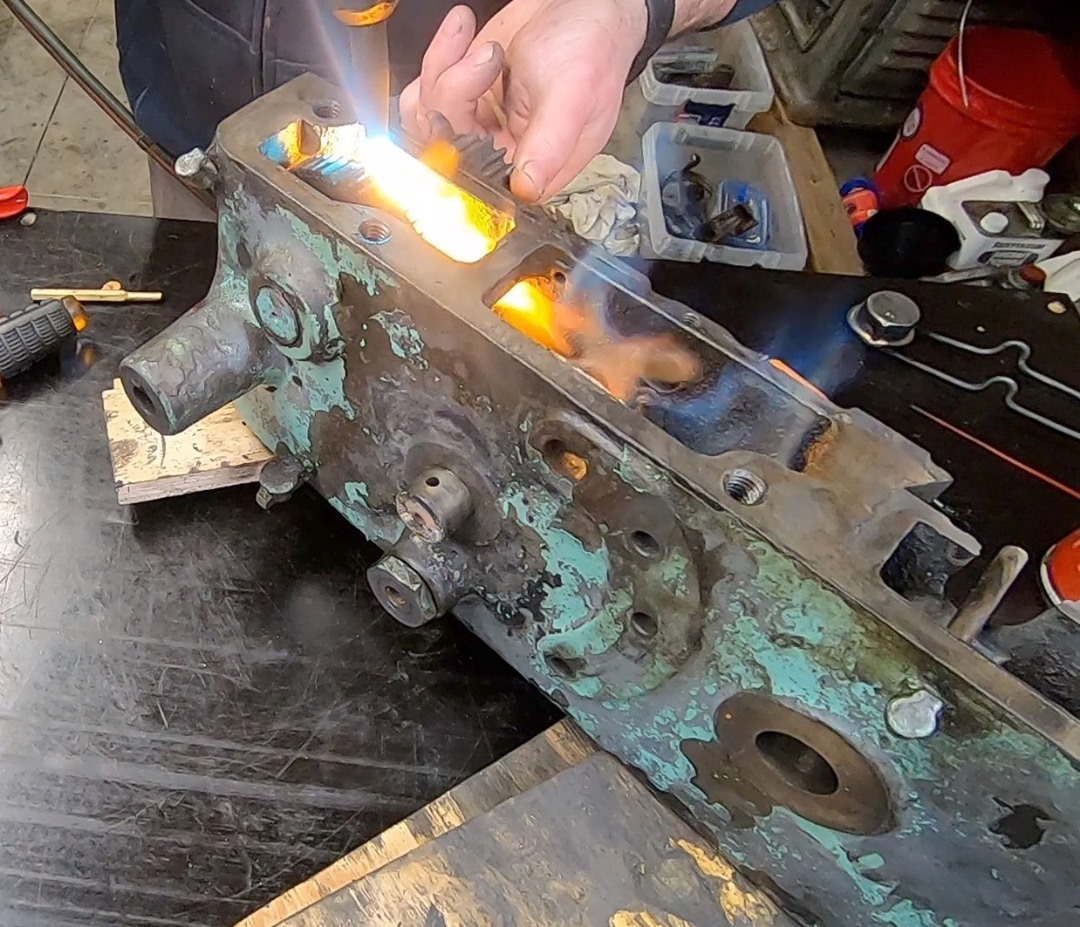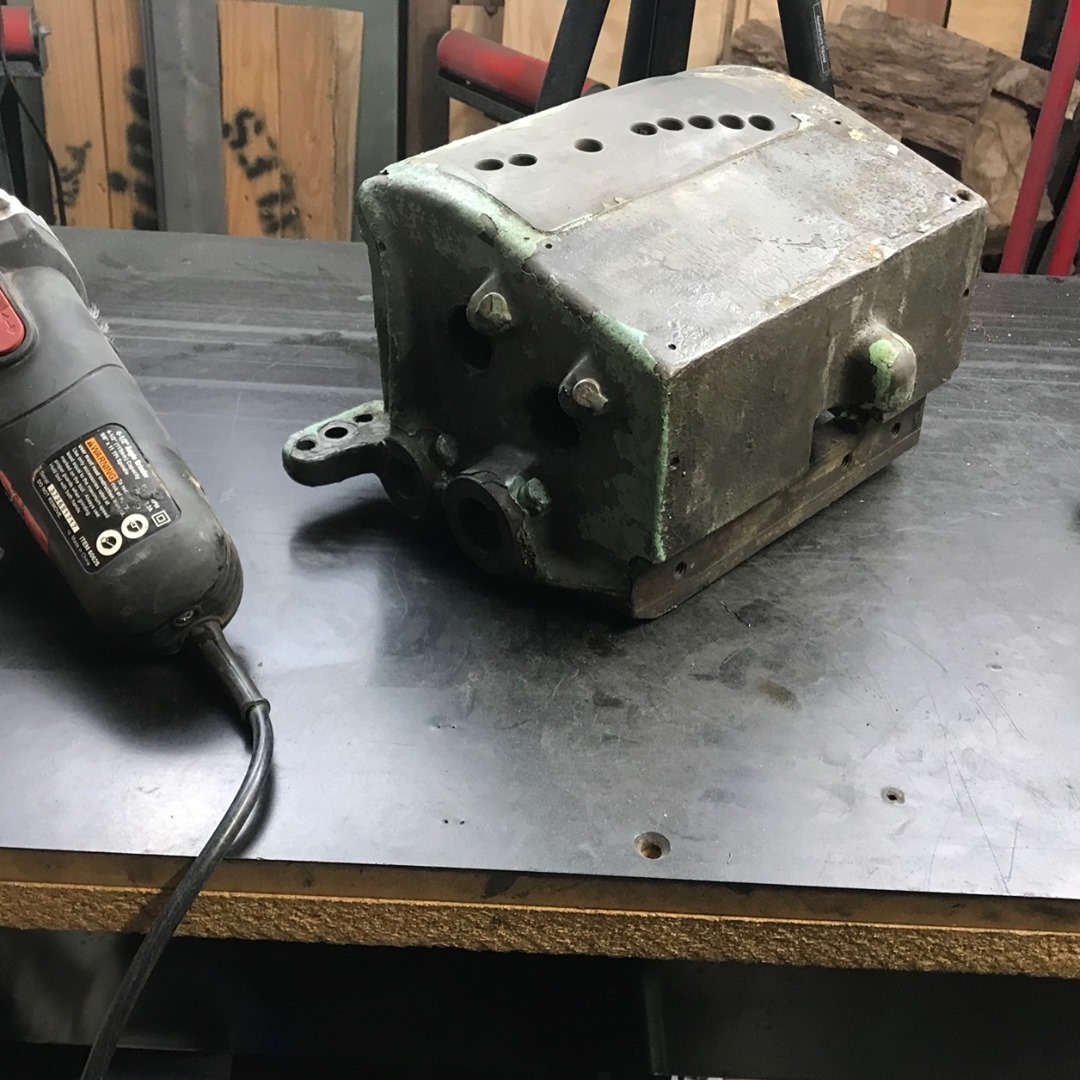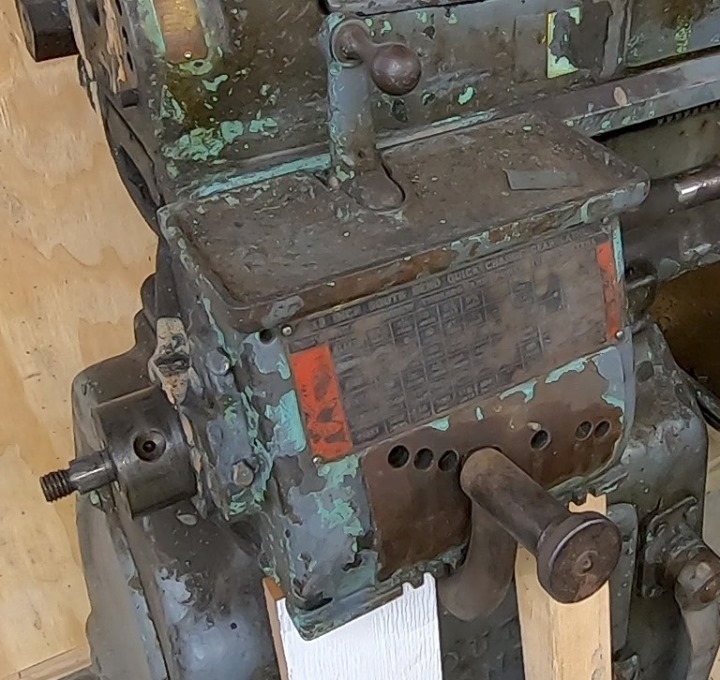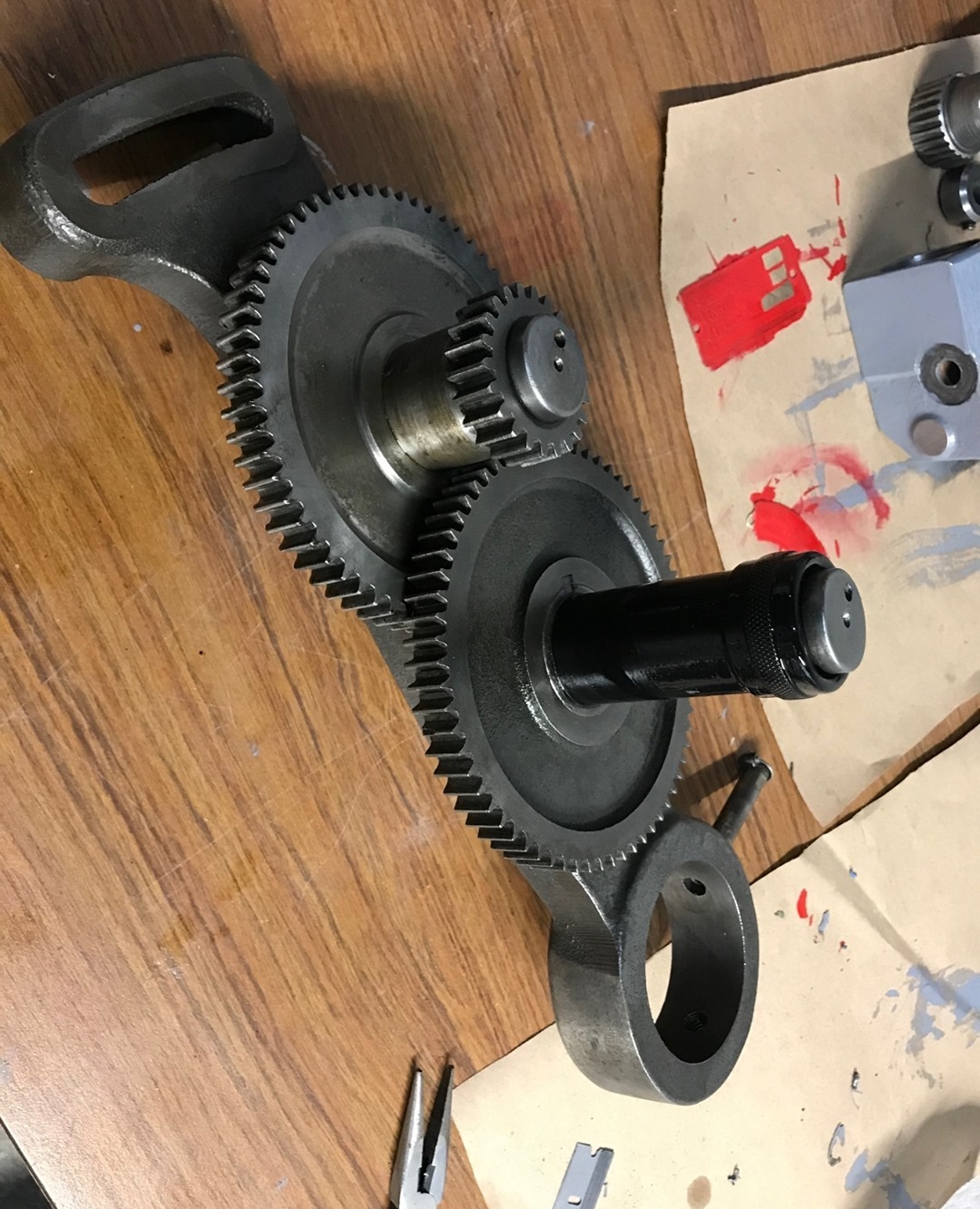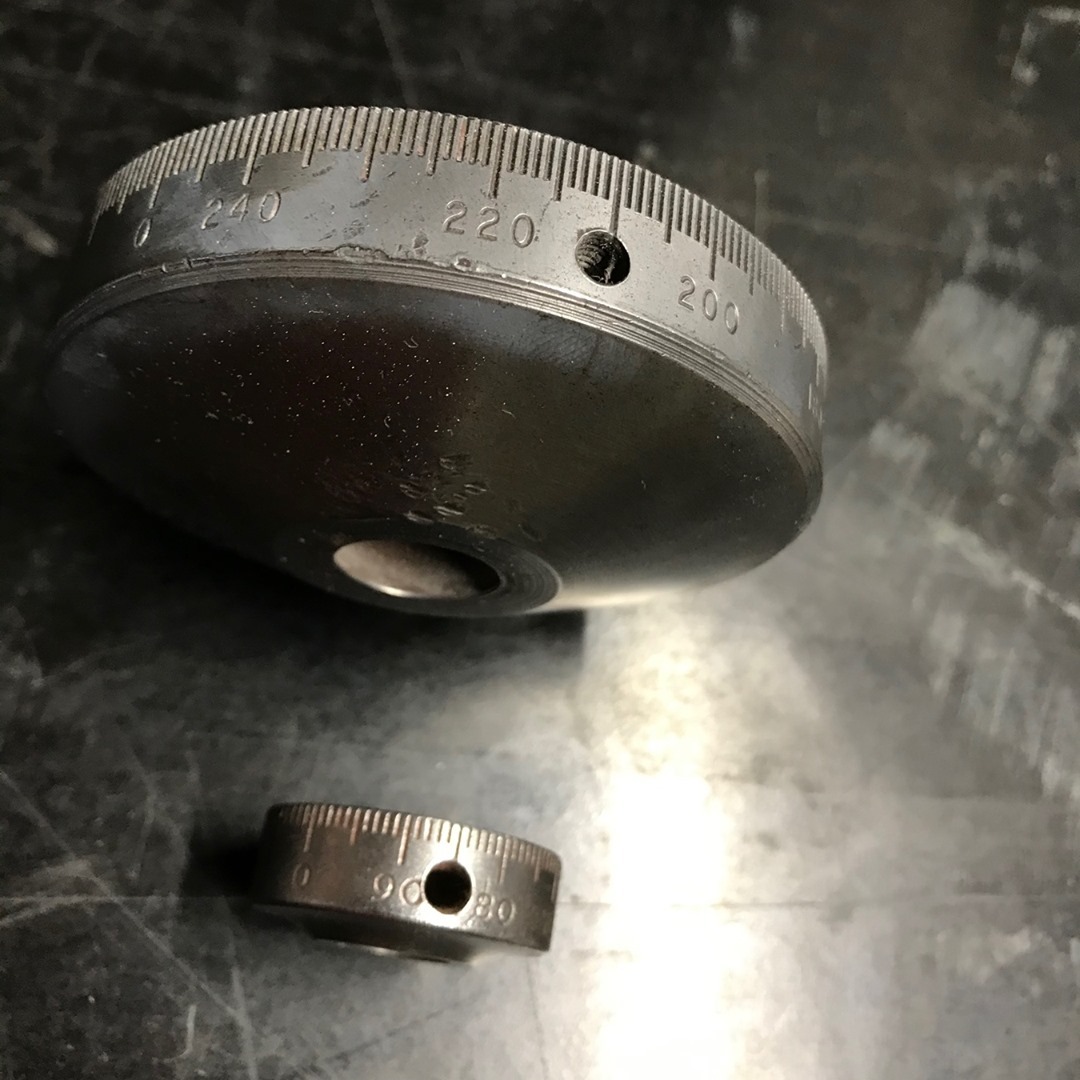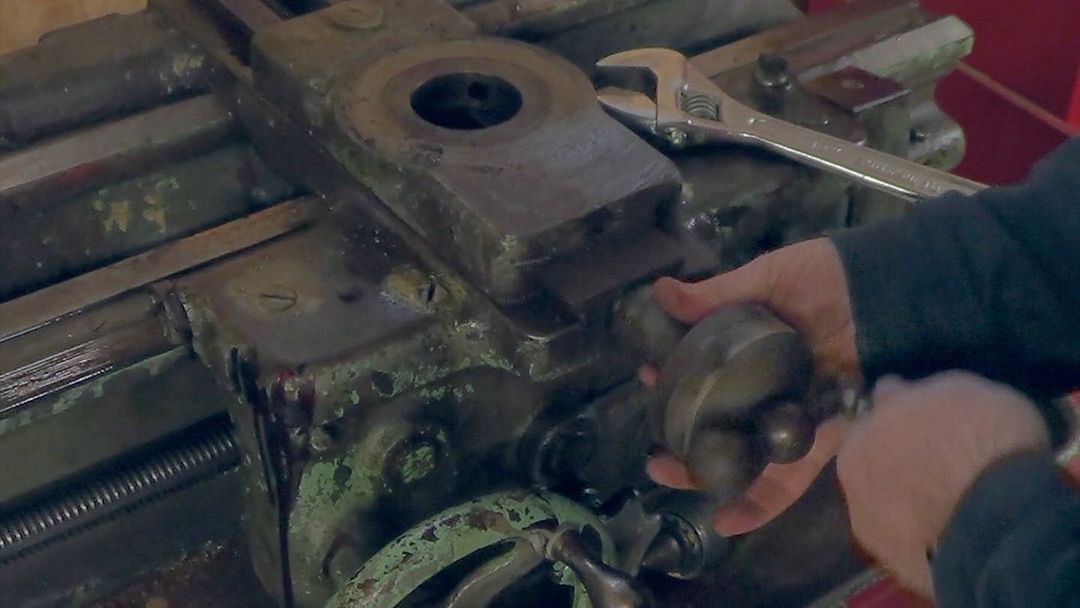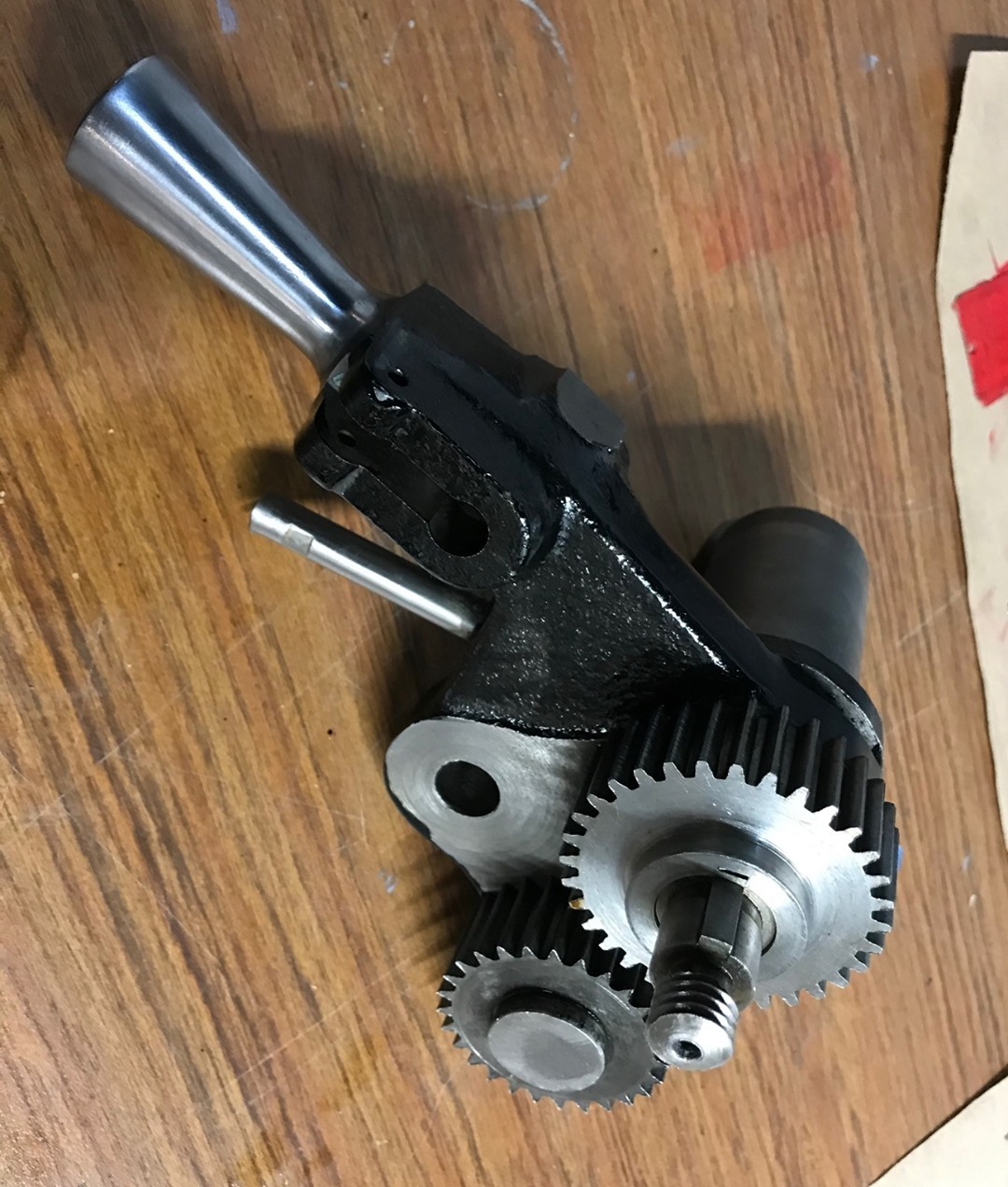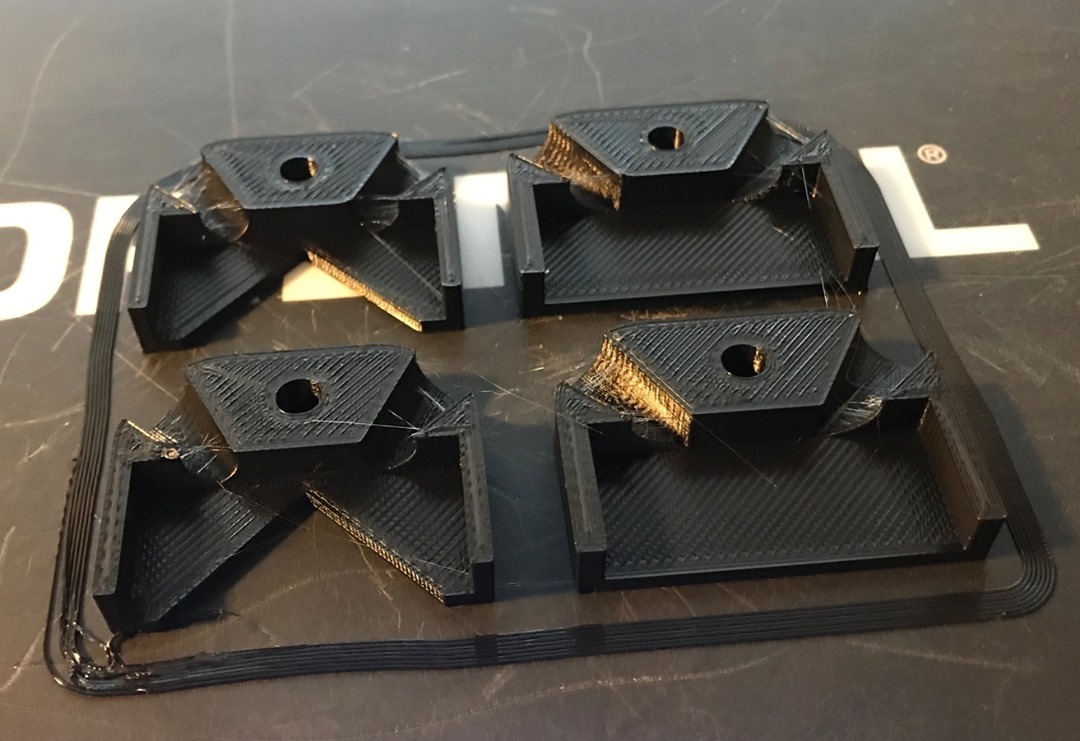This is a splined shaft that is part of the power feed clutch on the 1941 South Bend lathe I am restoring. The splines have been rounded over at the top after 80 years of use. I’m thinking I might TIG braze some aluminum bronze on them and hand file them to shape. I’ve had good luck using it on cast steel, it should work here.
.
.
.
.
.
.
.
Fire! I needed some heat to disassemble parts of the apron of my 1941 South Bend lathe.
Fire! I needed some heat to disassemble parts of the apron of my 1941 South Bend lathe. There were a number of taper pins that wouldn’t budge, no matter how hard I hit them. I used some heat to try and expand the material around the pin, making it a little easier to get. Worked most of the time.
.
.
Now that the quick change gearbox is out and disassembled.
Now that the quick change gearbox is out and disassembled, I can spend some time cleaning up the paint and remainder of the grease. I’m going to repaint this with some @rustoleum oil based enamel
.
.
.
.
.
.
.
Spent some time removing and disassembling the single tumbler quick change gear box
Spent some time removing and disassembling the single tumbler quick change gear box from my 1941 13″ South Bend lathe. The gear box allows you to accurately set the rotation of the lead screw in relationship to the speed of the spindle. This makes it a snap to cut threads as well as set the feed rate for turning and facing operations.
.
.
.
.
.
.
.
Not sure what I want to do about these gears.
Not sure what I want to do about these gears. I’d really like to get the shafts out. I may try a gear puller and see if that won’t work them loose. But then I’d still have to get them back in once I clean them up.
.
.
.
.
.
.
.
The top dial is for the cross slide on my 1941 South Bend lathe.
The top dial is for the cross slide on my 1941 South Bend lathe. The bottom one is for the compound. If you look close, you can see they are different scales. The cross slide feed screw was changed from the factory 10 threads per inch with an indirect reading dial, to an 8 thread per inch screw with an direct reading dial. For the cross slide, the direct reading dial is a little easier to work with. For every turn of the handle, the tool moves in 0.125 inches, but would REMOVE 0.250 inches off the diameter. You would rarely, if ever, measure the RADIUS of the part you are turning, so this configuration makes the math much easier.
.
.
.
.
.
.
.
I disassembled the cross slide on my 80 year old metal working lathe.
I disassembled the cross slide on my 80 year old metal working lathe. Lots of little pieces, and some that were just plain wrong.
.
.
.
.
.
.
.
Sneak peek of how the reversing lever is turning out.
Sneak peek of how the reversing lever is turning out. I’m dropping a video on YT this Friday of the teardown of the main gear train on my 80 year old lathe.
.
.
.
.
.
.
.
Picked up this 80 year old copy of the Machinery’s Handbook.
Picked up this 80 year old copy of the Machinery’s Handbook. This has charts, data, and specifications on just about anything you would need to make on a lathe or other machines. Things like how deep the threads for a 1-7/8″-8 spindle would be. A must have for any budding machinist. And I specifically wanted an edition as old as my lathe, for nostalgia more than anything.
.
.
.
.
.
.
.
You never realize how useful a 3D printer can be until you have a 3D printer.
You never realize how useful a 3D printer can be until you have a 3D printer. The tailstock for my 1941 South Bend lathe did not have way wipers on it. The way wiper clears away junk on the ways (where the tailstock slides) preventing that junk from getting under it and damaging the ways. So I drew up and made a set of way wiper covers that I will mount on the tailstock with machine screws. I even incorporated some oil passageways to occasionally add more way oil.
.
.
.
.
.
.
.

